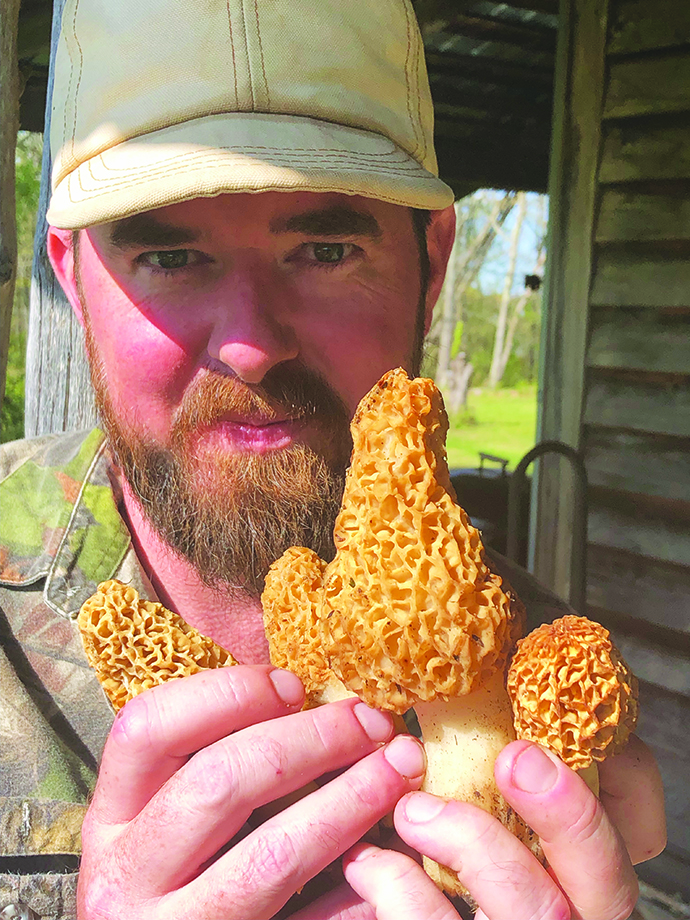Spring Fishing, Hunting, and Foraging
Happy April! If you are like me, you have spent the months since deer season eagerly awaiting the arrival of spring- and the plethora of outdoors activities that comes with it.
Through winter, I manage to entertain myself outside tracking in the snow, snaring rabbits, chasing squirrels, and searching the laurel thickets for antler sheds. All of that, however, is merely a midnight snack holding me over until the breakfast buffet of April! Here’s to fishing, foraging and turkey hunting!
Trout Fishing
While the farm ponds and lakes are still relatively quiet for bass fishing, early Spring is a perfect time to try your luck in our WV streams and rivers for trout! We are fortunate to live in a state with nine fish hatcheries and an excellent stocking program. Stockings are posted by the end of each business day on the WV DNR website (https://wvdnr.gov/fishing) and on the hotline number at (304) 558-3399.
Spinner baits- such as Rooster Tails and Joe’s Flies- and salmon eggs or Power Bait are some effective presentations for hooking a trout in our local waters. My personal favorite- the fly rod- is a meditative and therapeutic excuse to wade our beautiful WV streams. Stay tuned for some future fishing tips and tricks and good luck this April!
More information on the stocking program, as well as regulations and license information can be found on the WV DNR website.
Ramps
Mmmmm… Ramps.
If you are no stranger to the woods, you are certainly no stranger to our early spring ramps. Nothing screams “It’s spring!” more than the sight of their yummy green sprouts and the ensuing smelly breath that ushers in the season.
If you are new to ramp digging, my best advice is to ask a friend or neighbor to guide you to a healthy patch and introduce you to the process of identifying and harvesting them. WV.gov recommends exercising sustainable harvesting practices such as only taking from patches with more than 100 plants, taking only one-fifth of the plants in a patch, and using a soil fork to dig a ramp bulb.
Ramps can be legally harvested on national forest land for personal use, with certain limits and regulations. Visit the State of West Virginia website for more information.
Morels
April is awesome, isn’t it?! When you’re not fishing or collecting ramps, why not stuff your pockets with morels?! Finding morels might not be quite as easy as catching that trout or digging those ramps, but boy are they good!

The first mushroom that typically starts of my season of fungi foraging, morels can be found throughout the month of April- if you know where to look. Once we have a few consecutive nights at 50 degrees or higher, strap on your boots and search those southern and western slopes under sycamore, oak, elm, ash, poplar, apple and aspen trees. Morels can be maddeningly elusive, but once you find one- STOP! You’re likely in the middle of several more.
Of course, make sure to positively identify any plant or mushroom before consuming. Morels are hard to confuse with any other fungi, but the false morel may be one to look up before heading out. If you are new to morel hunting and if you have a good friend (okay… a VERY good friend), ask them to take you out and introduce you to a spot to get you started!
Turkey Hunting
Every April, as the weather warms and the flowers are blooming, my favorite day of the year arrives- the start of Spring gobbler season. This year will be extra special as it lands on my birthday- April 15th!
What better way to celebrate another trip around the sun than to get into the woods and try to call in a boss tom?
Every spring, the male turkeys are on the lookout for hens to breed. At first light, you can hear their gobbles off in the woods. With a little luck, skill and a whole lot of patience you just might be able to call one in.
TURKEY HUNTING TIPS
–Scout early! Finding out where the turkeys are moving and roosting is essential for a successful gobbler season.
–Practice your calls! There is no magic call when turkey hunting- only a matter of preference. Whether you prefer a diaphragm call, box call or slate call, make sure to have it ready to work! My advice for beginner turkey hunters in the box call.
–Set up a blind! This is an effective strategy for all skill levels. If you are not one to run-and-gun (stealthily walking through the woods trying to close the gap on a longbeard), brushing in a blind over some decoys is the way to go. Good spots for a blind are along field edges, in woody openings, or in oak flats. Scouting is key.
–Decoys! There are a lot of turkey decoy setups that might bring your gobbler into shotgun range. The simplest setup is a single laydown or feeding hen. This can be coupled or replaced with a full-strut tom and/or a submissive jake. The internet can educate you on every possible setup under the sun.
–Less is more! Over-calling a tom is an incredibly easy mistake to make. Toms are used to hens coming to them to breed. If you are overcalling, the tom might feel comfortable staying put and waiting. You need to use his impatience against him!
More information on the Spring gobbler season can be found at the West Virginia DNR website- including regulations and hunting license information. Be safe and happy hunting.
Good luck out there! Act wild, feel wonderful and treat our woods with love!
Patrick is a local musician, educator, counselor and woods-wanderer in Greenbrier County. When he is not roaming the woods, he is teaching kids or playing keyboards for Lewisburg-based band Deep State.

